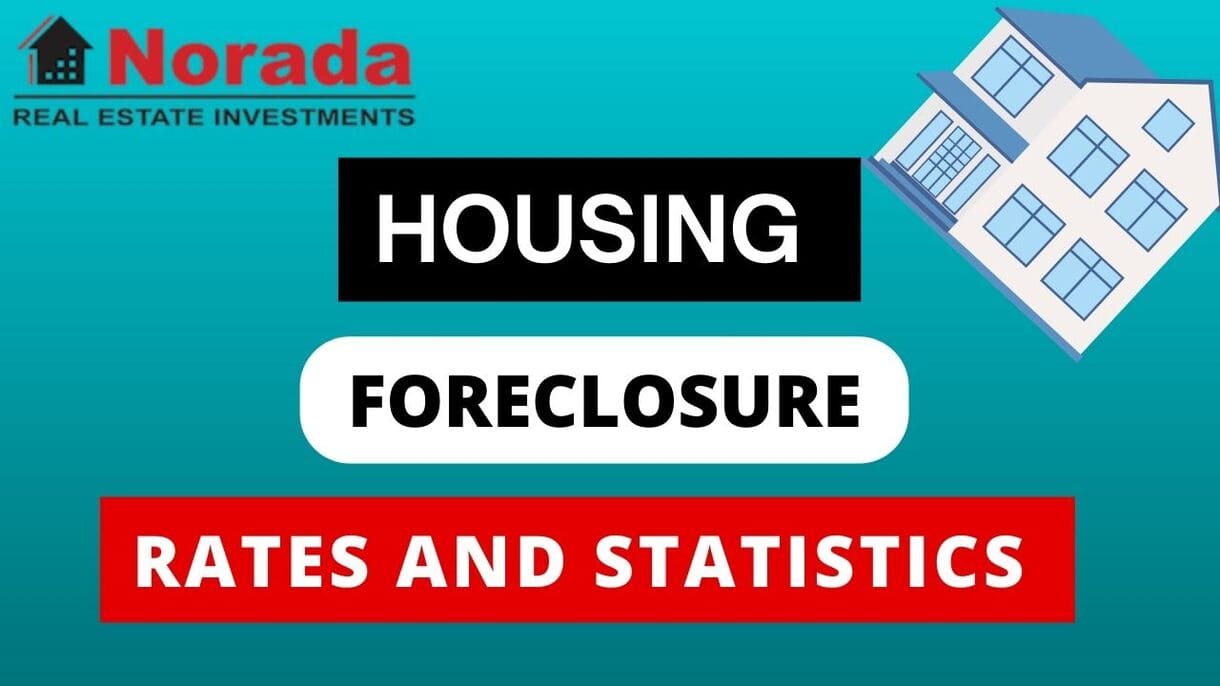Right now, there's a lot of chatter, and frankly, some worry, about where home prices are headed. After years of rapid price growth, several U.S. housing markets are showing signs of cooling—and fast. Based on recent data and expert forecasts, seven housing markets are now positioned for a significant price correction over the next 12 months, with double-digit (10%+) price declines increasingly likely.
While the national picture might look relatively stable, with Zillow forecasting flat growth for 2025 followed by a slight recovery in 2026, we need to dig deeper. The truth is, however, that the national average can mask significant regional shifts. For buyers, investors, and homeowners, it’s a shift worth watching closely.
It's easy to get caught up in broad predictions, but the reality for individual homeowners and prospective buyers is often much more granular. While Zillow’s overall outlook suggests a market that’s not going to crash but rather pause before a slow climb, this doesn’t mean every town and city will follow suit.
My experience tells me that localized economies, job market health, and demographic trends play a far bigger role in specific housing markets than we often give them credit for. I've seen firsthand how a single major employer leaving a town can have a ripple effect, or how a surge in new construction in one area can cool prices elsewhere.
So, what's driving these projected drops in the markets I'm highlighting? It's rarely a single factor, but rather a confluence of economic realities. Think about it: if a region’s main industries are struggling, or if fewer people are moving there because of limited job opportunities, demand for housing naturally decreases.
This, coupled with potentially higher interest rates that make mortgages more expensive, can put significant downward pressure on prices. We’re also seeing a shift in buyer preferences post-pandemic, with some smaller, more remote markets that boomed during the early days of COVID-19 now facing a readjustment.
Let’s get straight to the point: based on recent forecasts and my own market observations, these are the areas where we might see some of the most significant price adjustments.
Will These 7 Housing Markets Crash Over the Next 12 Months?
The Markets Facing a Double-Digit Dip
It's important to preface this by saying that these forecasts are based on current data and economic projections, and the market can always surprise us. However, Zillow's data, when examined with a keen eye, highlights some specific metropolitan areas that are projected to experience more than a 10% price decline by September 2026.
Here’s a breakdown of the areas I’m watching closely:
| Region Name | State | Projected Decline by Sep 2026 | Key Factors to Consider |
|---|---|---|---|
| Greenville, MS | MS | -17.8% | Economic diversification challenges, population shifts, and a historically slower appreciation rate. |
| Pecos, TX | TX | -12.5% | Reliance on energy sector volatility, potential out-migration for better job prospects elsewhere. |
| Helena, AR | AR | -11.6% | Similar to other smaller Southern markets, facing economic shifts and demographic trends that are not favoring housing demand. |
| Middlesborough, KY | KY | -10.9% | Struggles in traditional industries, limited job creation, and a shrinking younger population moving to larger urban centers. |
| Bennettsville, SC | SC | -10.7% | Economic base reliant on sectors that may be facing headwinds, requiring significant investment to attract new industries. |
| Cleveland, MS | MS | -10.6% | Continuation of economic challenges in the Mississippi Delta region, impacting housing demand. |
| Clarksdale, MS | MS | -10.3% | Part of the broader Delta region facing similar economic pressures and population dynamics. |
These numbers are significant. A 10% drop means if a home was valued at $200,000 today, it could be worth closer to $180,000 in about two years. That’s a substantial change for homeowners and a considerable opportunity for buyers.
Why These Specific Markets? Unpacking the Trends
You might be wondering why these particular cities are showing these projections. It’s not about random chance; it’s about fundamental economic forces at play. Looking at the data and drawing on my understanding of regional economies, a few common threads emerge:
- Economic Dependence and Transition: Many of these areas, particularly those in the Mississippi Delta (Greenville, Cleveland, Clarksdale), have economies historically tied to agriculture or specific industries that are evolving or declining rapidly. When job opportunities dwindle or move elsewhere, the demand for housing naturally falls. This isn't a new story for these regions, but the current economic climate seems to be exacerbating the trend.
- Energy Sector Volatility in Texas: Pecos, TX, is a prime example of a market heavily influenced by the oil and gas industry. While this sector can see booming periods, it's also notoriously cyclical. When energy prices fluctuate or when national demand shifts, local economies can take immediate hits, leading to job losses and a subsequent drop in housing demand and prices.
- Demographic Shifts: Across many of these smaller cities, we're seeing a trend where younger populations are moving to larger, more opportunity-rich urban centers. This out-migration leaves behind an older demographic, which can lead to a decrease in the overall housing market demand and a surplus of existing homes for sale, pushing prices down.
- Limited Diversification: Markets that rely heavily on one or two industries are more vulnerable. If those industries face disruption, there aren't many alternative job sectors to absorb the shock. This lack of economic diversification makes them more susceptible to price declines when wider economic conditions tighten.
From my perspective, these markets often represent a tougher uphill climb for sustained home value appreciation. Unless there's a significant new investment or fundamental shift in their economic base, the trends indicate a period of price correction.
Looking Beyond the Numbers: My Insights
While the data from Zillow is invaluable, I always like to layer in my own observations and understand the human element behind these figures.
Firstly, it’s critical to remember that Zillow’s forecast aims for the median home value. This means some homes in these markets might fare better or worse. Luxury properties, for instance, can sometimes be more insulated or experience different correction patterns than entry-level homes.
Secondly, these projections are for the next year or so. Major economic events or shifts in consumer confidence can alter these trajectories. A sudden influx of new businesses or a significant infrastructure project could revitalization a struggling market faster than anticipated. However, based on the current momentum and economic indicators, these forecasts seem grounded.
I've also noticed that in markets that have seen prolonged periods of stagnation or decline, the cost of living can be significantly lower. This can make them attractive to a different type of buyer – one who prioritizes affordability and a slower pace of life over rapid appreciation. So, while prices might decline, it doesn't necessarily signal a “bad” market, but rather a market correction that can present unique buying opportunities for those with a long-term perspective.
It’s also worth mentioning how critical it is for people in these specific areas to be informed. If you’re planning to sell soon, understanding these potential declines is vital for setting realistic expectations and pricing your home competitively. If you’re a buyer, these markets could offer a chance to enter homeownership at a much more accessible price point.
What About the National Picture?
It’s easy to get fixated on the markets expected to see declines,but it’s important to zoom out. Zillow’s national forecast suggests a relatively flat year for home prices in 2025. This means that while some areas may dip, others will likely hold steady or see modest gains, balancing out the national average.
- Home Sales: The forecast anticipates 4.07 million existing home sales in 2025, a slight increase from 2024. This indicates that while the market isn't exactly booming, it's not collapsing either, suggesting continued activity albeit at a slower pace than a few years ago.
- New Listings: We’ve seen a cooling of new listings growth, but it's still expected to outpace sales. This is good news for inventory levels, which were critically low during the pandemic. More available homes mean less frantic bidding wars for buyers in many areas.
- Rents: Rent growth is also expected to cool significantly, with single-family rents projected to rise 2.8% and multifamily rents at 1.1% in 2025. This is a welcome change after several years of rapid rent increases and signals a more balanced rental market.
The national picture, therefore, paints a picture of a market that’s settling. It’s a transition from the frenzy of recent years into a more stable, perhaps even slightly cooling, environment.
The Takeaway for You
For anyone involved in real estate, whether you're a homeowner, a potential buyer, or an investor, staying informed about these specific market trends is key. The national narrative of “home prices are flat” is only part of the story. Understanding where specific vulnerabilities lie allows for more informed decisions.
If you own a home in one of the markets discussed, it’s wise to have realistic expectations about its value and consider how current economic conditions might affect your selling timeline and price.
If you’re looking to buy, these projected price declines could represent significant opportunities. However, it’s crucial to do thorough due diligence on the local economy and job market of any area you’re considering, especially in these more vulnerable regions. Don't just look at the price tag; understand the long-term prospects.
The real estate market is always evolving. By understanding the specific housing markets expected to see 10%+ price declines, you’re better equipped to navigate the current economic climate and make sound choices for your financial future.
Want Stronger Returns? Invest Where the Housing Market’s Growing
Turnkey rental properties in fast-growing housing markets offer a powerful way to generate passive income with minimal hassle.
Work with Norada Real Estate to find stable, cash-flowing markets beyond the bubble zones—so you can build wealth without the risks of ultra-competitive areas.
🔥 HOT NEW LISTINGS JUST ADDED! 🔥
Talk to a Norada investment counselor today (No Obligation):
(800) 611-3060
Want to Know More About the Housing Market Trends?
Explore these related articles for even more insights:
- Housing Market Trends: Nearly 1 in 3 Buyers Still Opt for All-Cash Deals in 2025
- Will the Housing Market Shift to a Buyer’s Market in 2026?
- Housing Market 2025: Booming vs. Shrinking Inventory Across America
- Housing Market Gains Supply But Buyers Hit Pause in 2025
- Mid-Atlantic Housing Market Heats Up as Mortgage Rates Go Down
- NAR Chief's Bold Predictions for the 2025 Housing Market
- Housing Market Update 2025: NAR Report Indicates Sluggish Trends
- 7 Buyer-Friendly Housing Markets in 2025 With Abundant Homes for Sale
- The $1 Trillion Club: America's Richest Housing Markets Revealed
- 4 States Dominate as the Riskiest Housing Markets in 2025
- Housing Market Predictions 2025 by Norada Real Estate
- Housing Market Predictions 2026: Will it Crash or Boom?
- Housing Market Predictions for the Next 4 Years: 2025 to 2029
- Real Estate Forecast: Will Home Prices Bottom Out in 2025?
- Real Estate Forecast Next 5 Years: Top 5 Predictions for Future
- Will Real Estate Rebound in 2025: Top Predictions by Experts





